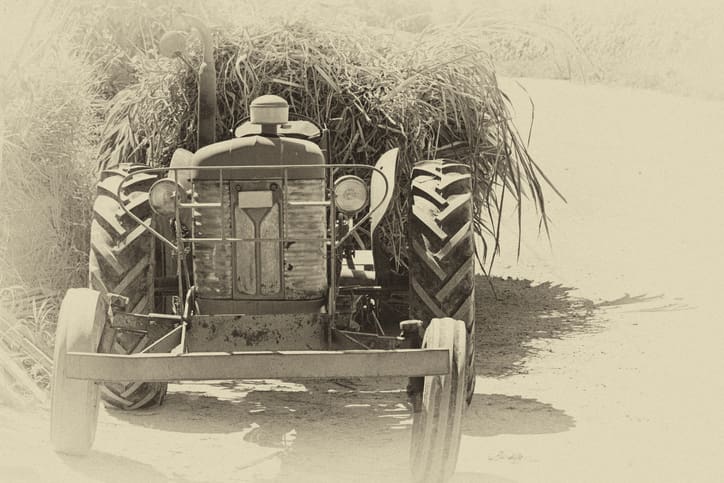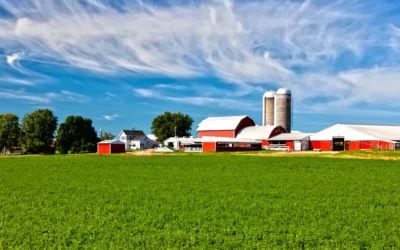Agriculture has consistently been a hotbed of innovation. From its inception around 12,000 years ago, which ushered in the transition from nomadic lifestyles to settled farming communities, to the agricultural revolution of the 18th century that introduced groundbreaking practices like crop rotation and advanced farming tools, the industry has been in a constant state of evolution.
Today, the pace of innovation is accelerating. In the past two centuries, agricultural practices have evolved from animal-powered farming to the use of sophisticated machines equipped with cutting-edge data analytics software. Among these advancements, one innovation stands out: the tractor.

John Froehlich was the brains behind the first internal-combustion traction motor—commonly known as the tractor. His invention was a response to the significant risks posed by existing threshing machines, which could inadvertently ignite entire fields, leading to catastrophic losses. Froehlich’s tractor addressed these challenges, transforming cumbersome, unsafe, and costly machinery into a portable and revolutionary farming tool.
While initially slow to gain traction, with only 20 machines sold from 1896 to 1914, the landscape began to change with the introduction of Froelich’s Waterloo Boy Model “R” single-speed tractor in 1914. This launch, coupled with Case IH rolling out their Titan 10-20 and Titan 15-30 models, marked the beginning of tractors becoming farm staples.
The acquisition of Froehlich’s company by John Deere in 1918 set the stage for a legendary rivalry between the iconic red and green tractor brands.
The proliferation of tractors on farms brought transformative changes. The land previously allocated for feeding and housing horses and mules was repurposed into arable land, granting farmers an additional 6 acres per animal each year. Consequently, farm sizes expanded threefold, while the population of work animals dwindled, underscoring the profound impact of tractors.
This revolution was further propelled by advancements in tractor technology, such as improved transmissions, pneumatic tires, and hydraulic lifts, each contributing to the continuous modernization of agriculture.
As significant as the tractor’s impact was, the industry is now at the cusp of another pivotal transformation. For the first time, consumer interest extends beyond the end product to the methods of production.
This evolving dynamic heralds a new agricultural revolution, with consumers actively influencing production through their purchasing choices. Preferring sustainably and ethically sourced products, consumers are not only advocating for eco-friendly practices but are willing to pay a premium for them—typically 30% to 40% more. This shift is significant as it introduces an era where transparent, data-backed narratives of sustainability and social responsibility are not just valued but expected.
Interestingly, this revolution is unfolding at a time when consumers are more detached from the farming process than ever before. Their ability to influence production methods instills a sense of trust and assurance in the products they consume, fostering a relationship of trust with producers, often located far from their consumer base.
Supporting this sustainability revolution is the seamless integration of technology and data in agriculture. Cutting-edge tools like drones, sensors, and animal monitors equip farmers with crucial data to optimize crop and livestock management, enhance productivity, and make informed decisions. These technologies are not just instrumental in improving farm operations but are pivotal in conveying the sustainability narrative to consumers.
By sharing data-driven insights with consumers, either directly or via processors, producers can provide tangible evidence of their commitment to environmental, social, and governance (ESG) principles, safeguarding against the pitfalls of greenwashing. This data exchange, facilitated even from remote farming locations, enables producers to command a premium for their sustainably produced goods, verified by robust farm data.
“Successful global integration of connectivity in agriculture could augment the global gross domestic product by $500 billion”
MCKINSEY & CO
Moreover, the potential economic benefits of this interconnected ecosystem are substantial. According to McKinsey, the successful global integration of connectivity in agriculture could augment the global gross domestic product by $500 billion.
In essence, just as the tractor redefined productivity and profitability in farming, the fusion of technology and sustainability is poised to reshape the relationship between producers and consumers, opening new avenues of growth and sustainability. This era of connectivity not only fosters transparent communication but also bolsters the larger sustainability movement in agriculture—a movement committed to nurturing farming practices that are financially viable and environmentally sound.


